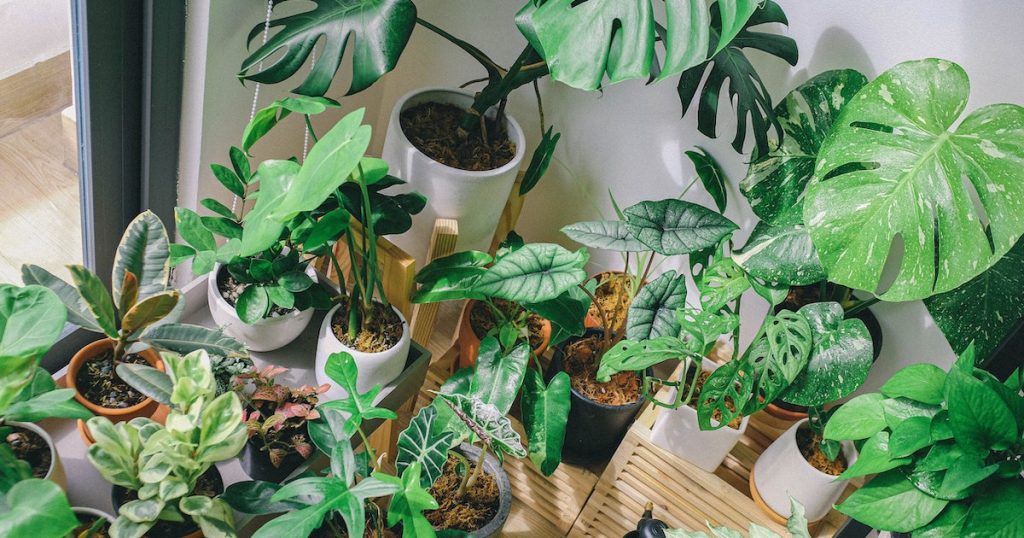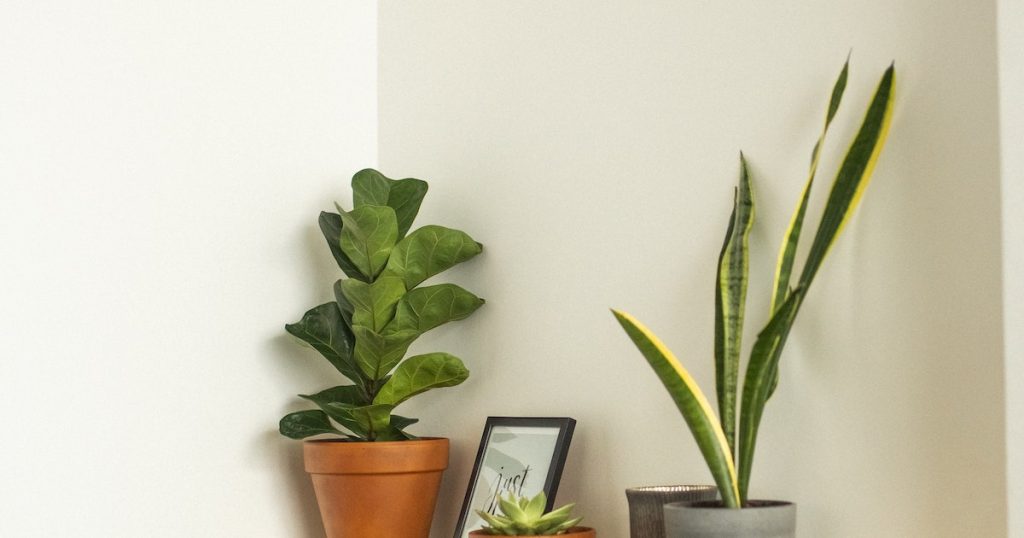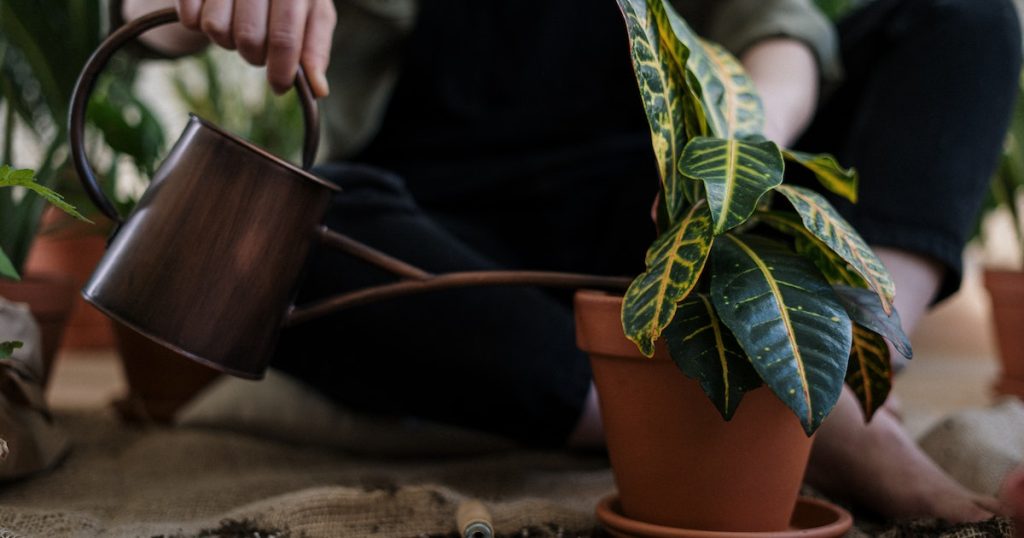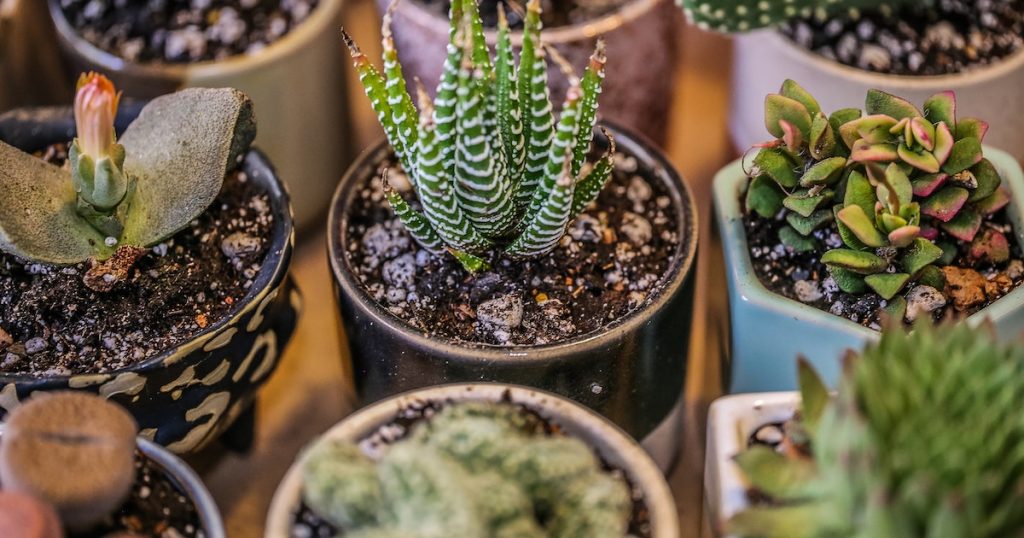Plants require moisture to survive. They absorb water from their surroundings through their leaves, and if the plant loses its ability to take in enough water, it can cause the leaves and the plant to wilt and eventually die. If you have indoor plants, you may be taking proper care of them by providing them with the right moisture. However, at times it can still dry out very fast. Why is that?
Your indoor plants may be drying out too fast for numerous reasons, of which underwatering is the most common. The water quality, humidity around your plant, its location, overwatering, loose soil, excessive wind, and a potbound plant can also be the causes of why your indoor plants are drying out so fast.
If your indoor plants are drying out despite proper care, there may be issues that you overlooked. We will investigate these reasons and why they can cause indoor plants to dry out so fast. This article will also reveal the measures you should take to prevent your indoor plant from drying out so quickly.

Table of Contents
Why Do My Indoor Plants Dry Out So Fast
There are many reasons your indoor plants may be drying out too fast, and you might not be able to diagnose the problem. To solve such a problem, you must first diagnose the problem of why your indoor plants are drying out so fast. Here is a list of the many reasons why your indoor plants are drying out:
1. Underwatering
Underwatering your indoor plants can cause your plants to have dry, crunchy leaves. The lowest leaves of your houseplant may frequently turn brown and crispy if the soil is allowed to become completely dry, especially for prolonged periods of time. Either the entire leaf or just the edges will dry out.
If you are not adequately hydrating, you could potentially just have brown leaves. Dry soil pockets in your pot will be an issue if you are not completely soaking your soil when you water. The roots in the dry areas of soil will eventually die if you consistently use this type of treatment, which may result in brown leaf tips or even worse conditions for your plants.
2. Water Quality
Another huge reason can be the water quality you are using to water your plants. Depending on your region’s tap water, it should be fine unless it is very hard water. However, you should avoid using a sodium-based water softening system because it is poisonous to plants.
Although chlorine in tap water won’t cause much damage to your plant, some plants may have issues with fluoride, which is present in tap water in many places. Fluoride can cause sensitive plants like spider plants (Chlorophytum), maize plants (Dracaena), and some palms to develop brown tips.

3. Humidity
High humidity benefits many plants, including ferns, Calathea, Maranta, Anthurium, and many others. If the humidity inside your home is too low, you could occasionally see brown leaf tips. Because the surrounding air will still rob the soil of moisture even with periodic watering, low humidity is the main cause of hard, cracked soil for your indoor plants, which can eventually dry out the indoor plants faster.
You must consistently water or mist your potted plant if you work in an air-conditioned office, live in an air-conditioned apartment, or both. With increasing humidity, the soil may stay moist for much longer as the air becomes dryer and more moisture is taken out of it.
4. It is Under Direct Sunlight
Some plants intake a lot of the sun, but the majority of those that can be safely kept indoors prefer to spend the bulk of the day in partial or complete shade with indirect sunlight.
The potting soil of your plant may dry up too quickly if it receives too much sunlight. The sun’s rays dry off the water in the soil, which makes it challenging for plants to receive the hydration they require. Furthermore, the heat from the sun can make soil minerals evaporate, making it more difficult for plants to acquire the nutrition they require. This will cause your indoor plant to dry out faster.
5. Excessive Wind
Excessive wind will naturally contribute to the soil becoming very dry. This is a common issue with potted plants in windy places since the wind’s low humidity takes whatever moisture may be present in the soil. Even if your plants are indoors, letting in the excessive wind through the window where your indoor plants may be situated can cause them to dry up quicker.
6. The Soil Is Loose
You may have loose soil in your plants for better development of your plants’ roots or to allow your plant to spread where it needs to quickly. However, this can cause a problem with water retention.
Loose soil will make the water drip through the pot. This will become an issue as frequent watering can cause the soil to clump together and harden in some spots but still provide routes for the water.
This can cause a variety of issues, including plant stress, root rot, and fungal development. Furthermore, the soil will dry out faster, making it harder to keep a steady moisture level.

7. Overwatering
There are numerous indicators that you are overwatering your indoor plant. One of the first signs of a serious case of overwatering is wilting of your plant, even though the soil is moist. It may seem like your plant is watered and moist, but it will not be intaking that water properly.
It is because overwatering can cause root rot, which means that the plant will be unable to take water from the roots to the leaves. This will eventually lead to your plant leaves drying out quicker as sufficient water will not reach the whole plant.
8. Potbound Plant
When you have a plant that is severely potbound, it will be difficult to water it efficiently. A potbound plant’s watering requirements will be difficult to meet because if the roots are clumped together, there will be little room for water for a plant that is potbound.
As a result, the plant roots will take in as much water as they can, and when the water dries up on its route from the roots to the stems and leaves, there won’t be enough water to go to the leaf tips, causing them to dry out.
How to Keep Indoor Plants from Drying Out
If you don’t water your indoor plants often, they might dry out and die. And even if you do water them regularly, they may still wilt or turn brown. There are many reasons why indoor plants may dry out as we discussed. So how do you make sure that your indoor plants don’t dry out?
Indoor plants require consistent moisture to thrive. They also need adequate sunlight to photosynthesize, which means they need direct sun exposure. We have compiled a list of measures to help you take proper care of your indoor plants and prevent them from drying out.
The video below can also help you take care of your indoor plants if you’re a beginner:
Repot Your Plant
There are several ways to identify if your houseplant needs to be repotted. Repotting it into a non-clay pot may be necessary if your old plant pot has become root-bound or if your plant has outgrown the previous pot. When you discover root-bound signs and symptoms, it is critical to repot your plant. It can help in cultivating better living conditions for your plant.
Plant Location
Your indoor plant’s location matters a lot, especially if you want it to last longer. You should put your plant pot in a shady spot to keep the potting soil from drying out. The sun’s heat can quickly dry out the soil, making it harder for plant roots to absorb water.
As a result, it is critical to give some shade to potting soil, especially during hot summer days. This keeps the soil moist and prevents nutrients from evaporating.
Plants should be moved away from heat sources and out of the direct path of airflow from vents. While abundant sunlight is vital, shifting plants to more humid spots around your home might help lessen how quickly they dry up. If you use a humidifier, consider relocating plants nearby so they can also benefit.
Add Olla to Your Plant
Ollas are unglazed clay pots with spherical bases that can be buried beneath the earth and refilled through the bottleneck entrance above the ground. It is, in fact, one of the oldest irrigation technologies known to man, extending back over 4000 years.
Water seeps from the olla into the soil by suction action when the soil is dry. Roots develop around ollas and draw water from the pot when necessary. They come in various sizes and blend nicely with active container gardens. You should just make sure to cover the olla’s top with a rock or cork to prevent mosquito breeding and wasteful evaporation.
Add Mulch on Top of the Soil Surface
Mulch may be the greatest and most dependable technique to keep your plant’s humidity high while maintaining nutrient-rich soil. It is a layer of organic material that is spread on top of the soil. Its primary function is to protect the soil from erosion and moisture loss. Mulch can be formed from various materials such as wood chips, bark, leaves, straw, and even newspaper.
This is especially critical in warmer weather when evaporation can quickly dry out potting soil. Mulch manages temperature extremes, protects roots from frost damage, and minimizes moisture loss.

Properly Water It
Before watering your plant, you should ensure whether it needs watering. Overwatering and underwatering kill a lot of houseplants. Watering on a schedule is not the greatest strategy because it can cause plants to get too much or too little water.
You should test out the soil with your finger to a depth of about two inches to determine when to water. If the soil is dry, it will most likely need to be irrigated. This strategy works for most plants, but there are a few outliers, which require much less water. Be informed what the requirement for watering your plants is.
There are two methods for irrigating your plant: watering from the top and watering from the bottom. The most popular method is top watering. Irrigate the container so that the water drains freely from the bottom. Small plants can be placed in the sink and then restored to their original placements once the water has drained.
Drainage saucers should be emptied of any excess water. Bottom watering is as simple as pouring water into the saucer or placing the container in a pot of water and allowing the water to absorb and draw up into the potting mixture. After you are done, remove any excess water. You should never leave your houseplants submerged in water.
You should also make sure that the pot has appropriate drainage holes. These holes serve to keep the potting soil from drying out by allowing extra water to drain away. Furthermore, they let air circulate around the roots, which aids in the prevention of root rot. Pots with proper drainage holes, as a result, can play an important role in keeping plants healthy and disease-free.
Set the Right Humidity
You can get a humidifier for your plants, but another way is grouping your plants together. Plants discharge moisture into the surrounding airspace as they transpire, so plants that are grouped together will generate a more humid environment around them.
However, you should avoid clumping them together; it can prevent air and light from reaching the leaves. Rotating and rearranging the grouped plants regularly will better assist with balanced airflow and light.
Conclusion
By reading this article and observing your plant closely, you can easily recognize why your indoor plant is drying out so fast. There are many reasons your plant is drying out so quickly, but there are also many measures you can take for a longer life for your plants, as described in this article.
Recent Posts
Have you found yourself wondering, 'why is my bamboo growing so slow?' Despite the fact that bamboo plants are remarkably fast-growing, it can sometimes take months (or even years!) to see any signs...
Miracle-Gro is a huge help when you are trying to get decent yields out of your plants or if you want them to thrive. However, you may have noticed that a single dose of fertilizer does little to...
